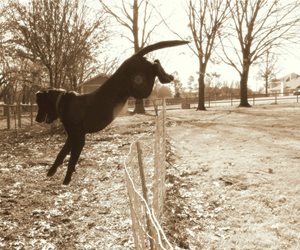Dog Fencing
Containment options for the family pet
By making sure your fence is the proper height for the size of your dog you can avoid this. Photo used under Creative Commons, from flickr user OakleyOriginals.
One of the most common reasons for installing a fence is to keep a pet safely confined within your yard. When it comes to pet fencing you have two options: a traditional, physical fence or an underground fence. With a traditional fence built of wood, metal or other materials the most important consideration is height. The size of your dog will help you determine the proper fence height.
If you don't want to install a tall fence all the way around your yard you can create a dog run by fencing only a small portion. Dog runs are typically long and skinny, making them a perfect use for sideyards. The run should provide your pet with an area large enough to run and get exercise. The smallest a fenced dog run should be is 16 feet by 6 feet. However, if you have a working breed, such as a retriever or a collie, you'll want to make it longer and wider.
Underground fences, such as Invisible Fence® are great if you have a pet that is a particularly skilled escape artist. Unlike traditional fencing, a dog cannot leap over, tunnel under or gnaw through an underground fence. Your pet will be kept in your yard with a combination of radio frequencies, static stimulation and personalized training. Boundaries for an underground fence can be set wherever you like - around your entire property, just a portion of your yard, or around a pool or vegetable garden.
Related Links
Privacy Fencing
Pool Fencing
Deer Fencing
Security Fencing

 Backyards
Backyards
 Front Yards
Front Yards


